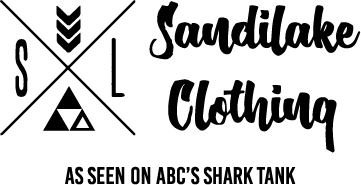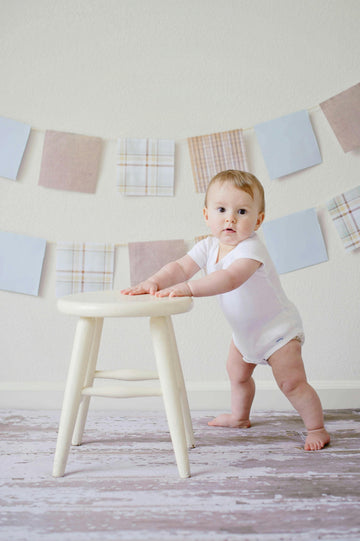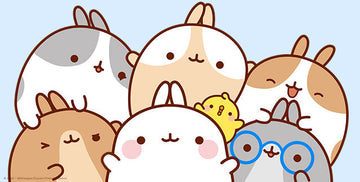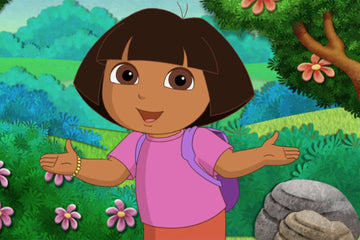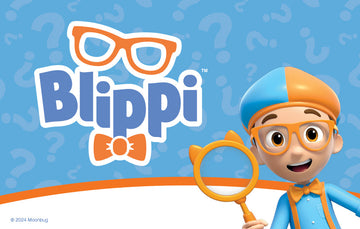When preparing for a new baby, one of the most common questions parents ask is, "How many baby clothes do I need?" With so many adorable options on the market, it can be tempting to stock up on every cute outfit you come across. However, it's important to strike a balance between having enough clothes and not going overboard.
The answer to this question will vary depending on a few factors, including how often you plan to do laundry, how quickly your baby is growing, and the climate in your area. In general, it's recommended to have around 6-8 onesies, 6-8 sleepers, and 2-4 outfits for going out per size (newborn, 0-3 months, 3-6 months, etc.). It's also a good idea to have a few extra items on hand in case of diaper blowouts or spit-up incidents. By following these guidelines, parents can ensure that they have enough clothes to keep their baby comfortable and clean without going overboard.
Understanding Baby Clothing Sizes
When it comes to baby clothes, understanding the sizing can be a bit confusing. Unlike adult clothing, baby clothes are sized by age and weight, and can vary greatly between brands. It's important to keep in mind that babies grow quickly, so it's best to not stock up on too many clothes in one size.
Here are some tips for understanding baby clothing sizes:

Age Ranges
Baby clothing sizes are typically labeled with an age range in months, such as 0-3 months or 6-9 months. Keep in mind that these age ranges are just estimates, and that babies grow at different rates. It's always a good idea to try on clothes before purchasing to ensure a proper fit.
Weight Ranges
Another way baby clothes are sized is by weight range. This is especially helpful for newborns, as they can vary greatly in size. For example, a newborn size may fit babies weighing between 5-8 pounds, while a 0-3 month size may fit babies weighing between 8-12 pounds.
Brand Variations
It's important to note that sizing can vary greatly between brands. A size 0-3 month onesie from one brand may fit differently than a size 0-3 month onesie from another brand. It's always a good idea to check the brand's size chart before purchasing, and to keep in mind that some brands may run larger or smaller than others.
Overall, understanding baby clothing sizes can take some time and trial and error, but with these tips, parents can feel confident in finding the right size for their little one.
Newborn Essentials Checklist
Preparing for a new baby can be overwhelming, especially when it comes to figuring out what items are essential. Here is a checklist of newborn essentials to help new parents get started:
Clothing
6-8 onesies
6-8 sleepers
4-6 pairs of socks
2-3 hats
2-3 pairs of scratch mittens
1-2 swaddles or wearable blankets
Diapering
2-3 packs of newborn diapers
1-2 packs of wipes
Diaper cream
Changing pad
Diaper bag
Feeding
Breastfeeding or formula supplies (depending on feeding choice)
Burp cloths
Bottles (if formula feeding)
Bottle brush and drying rack (if formula feeding)
Sleeping
Crib or bassinet
Mattress and fitted sheets
Sound machine or white noise app
Pacifiers (optional)
Bathing
Baby bathtub
Baby shampoo and body wash
Soft washcloths
Hooded towels
Other Essentials
Car seat
Stroller
Baby carrier or wrap
Thermometer
Nasal aspirator
Baby nail clippers
Remember, each family's needs and preferences may vary. This checklist is a starting point for new parents to ensure they have the basics covered for their newborn.
Quantifying Baby Clothes: A Guideline
When it comes to buying baby clothes, it can be overwhelming to determine how many items to purchase. While every baby's needs are different, there are some general guidelines that can help parents prepare for their little one's arrival.
Newborn Clothes
Newborns typically require the most frequent clothing changes, as they tend to spit up and have diaper blowouts more often. It is recommended to have at least 7-10 onesies, 5-7 sleepers, and 3-5 outfits for going out. Additionally, having a few pairs of socks and mittens can be helpful to keep your baby warm and prevent them from scratching themselves.
0-3 Months Clothes
As your baby grows, they may start to require fewer clothing changes. For this age range, it is recommended to have at least 7-10 onesies, 5-7 sleepers, and 3-5 outfits for going out. It can also be helpful to have a few lightweight jackets or sweaters for cooler weather.
3-6 Months Clothes
By this age range, babies may start to outgrow their newborn and 0-3 month clothes. It is recommended to have at least 5-7 onesies, 3-5 sleepers, and 2-3 outfits for going out. It can also be helpful to have a few pairs of pants and shorts.
6-9 Months Clothes
By 6-9 months, babies may start to move around more and require clothing that allows for more movement. It is recommended to have at least 5-7 onesies, 3-5 sleepers, and 2-3 outfits for going out. Additionally, having a few pairs of leggings or stretchy pants can be helpful for crawling and exploring.
Overall, it is important to keep in mind that every baby's needs are different and these guidelines are just a starting point. It can be helpful to have a mix of different sizes and styles to ensure that your baby is comfortable and well-dressed for any occasion.
Seasonal Considerations for Baby Clothes
When it comes to dressing up your baby, seasonal considerations are crucial. The weather can impact your baby's comfort and health, so it's important to choose the right clothes for each season.
Summer
During summer, it's important to keep your baby cool and comfortable. Lightweight and breathable fabrics such as cotton and linen are ideal for hot weather. Opt for onesies, rompers, and short-sleeved t-shirts paired with shorts or skirts. Don't forget to protect your baby's delicate skin from the sun with a wide-brimmed hat and sunscreen.
Fall
Fall weather can be unpredictable, so it's important to dress your baby in layers. Lightweight jackets, cardigans, and sweaters are perfect for chilly mornings and evenings. Long-sleeved onesies and pants made from soft and warm fabrics such as fleece or wool are also great options.
Winter
Winter requires warm and cozy clothing to keep your baby comfortable. Choose thick and insulating fabrics such as fleece, wool, and down. Dress your baby in layers, including a warm onesie, pants, a sweater or jacket, and a hat. Don't forget to cover their hands and feet with mittens and booties.
Spring
Spring can be a tricky season, as the weather can be unpredictable. Dress your baby in lightweight layers that can be easily added or removed as needed. Light jackets, cardigans, and long-sleeved onesies paired with pants or leggings are perfect for this season. Don't forget to protect your baby's skin from the sun with a hat and sunscreen.
In summary, dressing your baby appropriately for each season is essential for their comfort and health. By choosing the right fabrics and layering appropriately, you can ensure that your baby is comfortable and happy year-round.
Laundry Frequency and Clothing Rotation
When it comes to baby clothes, laundry is an inevitable task. Babies tend to get messy quickly, and their clothes need to be washed frequently. However, it's important to strike a balance between cleanliness and practicality. Washing clothes too often can be time-consuming and wasteful, while not washing them enough can lead to hygiene issues.
As a general rule, it's recommended to wash baby clothes every two to three days. This allows for enough time between washes to accumulate a full load of laundry, while also ensuring that clothes are not worn for too long without being washed. Of course, this frequency can vary depending on the baby's age, activity level, and health.
When it comes to clothing rotation, it's important to have a balance of different sizes and types of clothes. Newborns tend to grow quickly, so it's important to have a few different sizes on hand. As babies get older, they may need more durable and practical clothing for crawling and walking.
In terms of specific clothing items, it's helpful to have a few key pieces that can be mixed and matched. For example, a set of onesies, leggings, and sleepers can be worn in various combinations to create different outfits. It's also important to have a few special occasion outfits on hand for events like weddings or holidays.
Overall, finding the right balance of laundry frequency and clothing rotation can make life with a baby much easier. By being prepared and organized, parents can focus on enjoying time with their little one without worrying about laundry or outfit choices.
Storage Solutions for Baby Clothes
When it comes to storing baby clothes, it's important to keep them organized and easily accessible. Here are some storage solutions to consider:
Drawers
Dressers with multiple drawers are a popular choice for storing baby clothes. They allow for easy organization by size, type, or season. Consider using drawer dividers to keep items separated and easily visible.
Closet Organizers
Closet organizers can be a great way to maximize space and keep baby clothes organized. Hanging organizers with multiple compartments can be used to store onesies, socks, and other small items. Consider using hangers with clips to hang pants, skirts, and dresses.
Baskets and Bins
Baskets and bins can be used to store larger items such as blankets, towels, and swaddles. They can also be used to store clothes that are out of season or that your baby has outgrown. Consider labeling each basket or bin to make it easy to find what you need.
Under-bed Storage
Under-bed storage can be a great way to store baby clothes that are out of season or that your baby has outgrown. Consider using vacuum-sealed bags to save space and protect clothes from dust and moisture.
In summary, there are many storage solutions to consider when it comes to baby clothes. By keeping items organized and easily accessible, you can save time and reduce stress when it comes to dressing your little one.
Tips for Selecting the Right Clothes
When it comes to selecting clothes for a baby, there are a few things to keep in mind to ensure that you choose the right ones. Here are some tips to help you out:
1. Comfort is Key
Babies have sensitive skin, so it's important to choose clothes that are soft and comfortable. Look for clothes made from natural fabrics like cotton, as these are gentle on the skin and breathable.
2. Consider the Weather
When selecting clothes for your baby, it's important to consider the weather. In warmer months, opt for lightweight and breathable fabrics like cotton or linen. In colder months, choose warmer fabrics like fleece or wool.
3. Think About Functionality
Babies grow quickly, so it's important to choose clothes that are easy to put on and take off. Look for clothes with snaps or zippers, as these are easier to manage than clothes with lots of buttons.
4. Don't Forget About Size
It's important to choose clothes that fit your baby properly. Avoid clothes that are too tight or too loose, as these can be uncomfortable for your baby. Be sure to check the size chart before making a purchase.
5. Choose Clothes That are Easy to Clean
Babies can be messy, so it's important to choose clothes that are easy to clean. Look for clothes that are machine washable and don't require special care. Avoid clothes that are dry clean only or require hand washing.
By keeping these tips in mind, you can select the right clothes for your baby that are comfortable, functional, and easy to care for.
When to Shop for Larger Sizes
As babies grow at a rapid pace, it is important to plan ahead and purchase clothes in larger sizes to ensure that they are comfortable and well-fitted. Here are some tips on when to shop for larger sizes:
1. Keep an eye on the baby's weight and height
It's important to keep track of the baby's weight and height to determine when it's time to shop for larger sizes. Generally, babies grow out of their clothes every three to four months, but this can vary depending on the baby's growth rate. It's a good idea to measure the baby's height and weight every month to determine if they need a new size.
2. Buy clothes in advance
It's always better to be prepared and buy clothes in advance rather than waiting until the baby outgrows their current size. This will save you time and money in the long run. You can purchase clothes in larger sizes during sales or clearance events to save money.
3. Consider the season
When shopping for larger sizes, it's important to consider the season. For example, if the baby will be six months old during the winter, it's best to purchase warm clothes in larger sizes. On the other hand, if the baby will be six months old during the summer, it's best to purchase lightweight clothes in larger sizes.
By keeping these tips in mind, parents can ensure that their baby is comfortable and well-dressed as they continue to grow.
Managing Hand-Me-Downs and Gifts
When it comes to managing hand-me-downs and gifts, it's important to be organized. It's easy to lose track of what you have and what you need when you have a lot of baby clothes coming in from different sources.
One way to stay organized is to create a spreadsheet or list of all the baby clothes you have. This can include the size, type of clothing, and where it came from. By keeping track of what you have, you can avoid buying duplicates and ensure that you have everything you need.
Hand-me-downs can be a great way to save money on baby clothes. However, it's important to inspect them carefully before using them. Make sure they are in good condition and free from any stains, tears, or other damage. If you receive clothes that are not in good condition, consider donating them or using them as rags.
Gifts can also be a great source of baby clothes. However, it's important to remember that not all gifts will be useful or practical. If you receive clothes that are not your style or not appropriate for the season, consider exchanging them or donating them.
Overall, managing hand-me-downs and gifts can be a great way to save money on baby clothes. By staying organized and being selective about what you accept, you can ensure that your baby has everything they need without breaking the bank.
